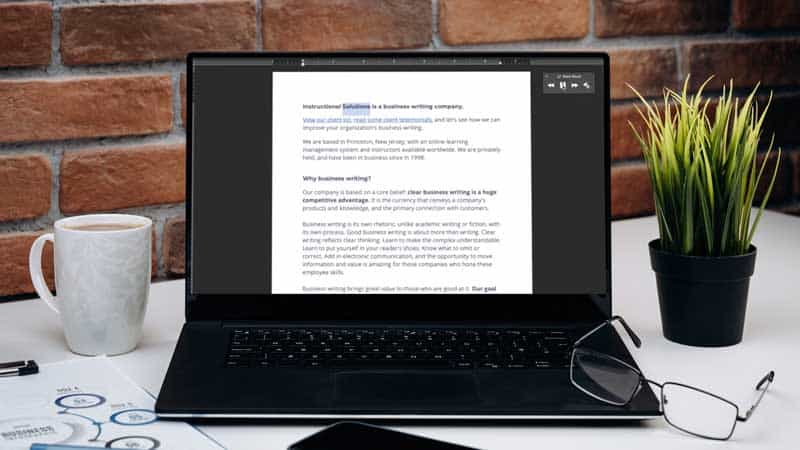How to Use the Word Read Aloud Tool for Editing

Writing with AI - Learn more

If you use Microsoft Word for drafting entire documents, you might have been overlooking a useful tool—the Read Aloud feature. Word's Read Aloud does exactly what you might imagine: it reads your document out loud for you. Watch this short video for a demonstration of how the tool works:
Read on to learn why you should incorporate Read Aloud into your editing process.
The Word Read Aloud feature is located in the Review tab in Office 2019, 2021, and Microsoft Office 365, and it is available for both PC and macOS users. Read Aloud is also available in Word’s Immersive Reader function.
Once you select the Read Aloud option, a tool pops up that provides several settings. These settings allow you to:
You can also use keyboard shortcuts (e.g., CTRL + Space to play or pause Read Aloud) for quick access to different features. The Read Aloud function will start reading a highlighted section of text or begin at your cursor.
Reading your drafts out loud is a helpful editing practice, and the Word Read Aloud tool makes it even easier to improve and polish your writing.
Receive instructor feedback on your actual writing.
Learn MoreMany writing instructors recommend reading your drafts out loud when you edit. Reading out loud makes it easier to notice small issues, repetitive language, and awkward phrasing. It can even help you notice mistakes that Word and Grammarly’s grammar checks might not catch. However, when reading your own work out loud, it’s easy to skim over those same errors and make corrections mentally without fixing them in your draft.
That’s one of the reasons the Word Read Aloud tool is so helpful—it does the reading for you, which means you can focus on listening as well as reading. Using Read Aloud means you’re much more likely to catch issues with syntax and grammar.
Word’s Read Aloud tool makes it easy to notice errors in flow, spelling, and grammar because it highlights each word on the screen as it reads. This aspect of Read Aloud is especially helpful for writers working in a non-native language. If you notice an issue, you can easily pause the Read Aloud function, make a correction, and start again to hear how the edit sounds.
Proofreading with the Read Aloud tool is a great option for shorter documents like emails, reports, business letters, and memos. You can also use Read Aloud for longer documents like proposals, especially if you don’t have a proofreader available—just make sure you have enough time to listen to the whole thing!
Since the Read Aloud tool is part of Word, you can use this function without having to install and use a secondary piece of software. The Read Aloud tool also increases accessibility for Word users by providing an extra option for engaging with written text in an audio format.
To become a more advanced business writer and improve your proofreading skills, enroll in one of our online, self-paced courses.